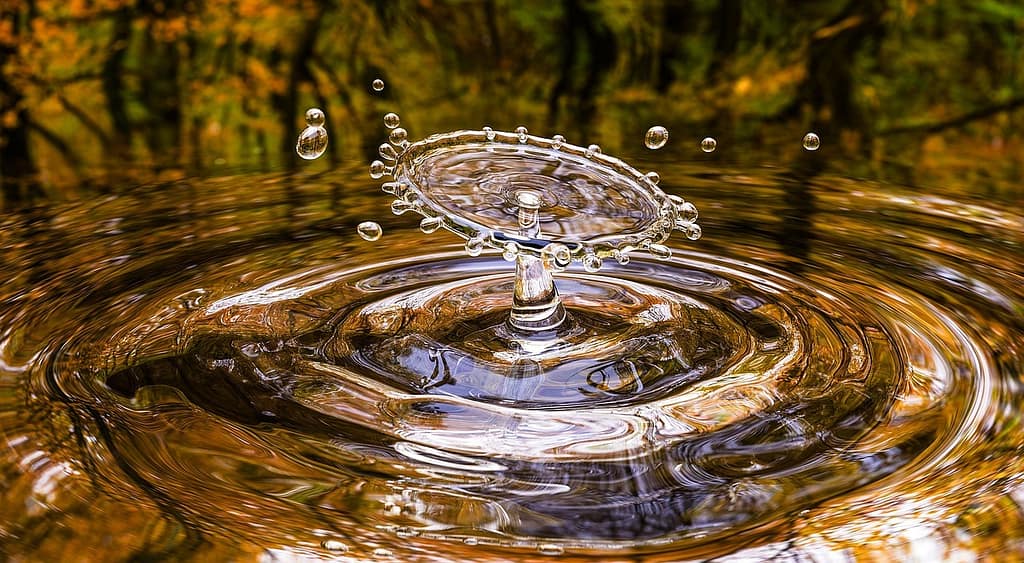Introduction
Tropical rainforests are commonly referred to as the “lungs of the Earth.” These lush, vibrant ecosystems cover only about 6% of the Earth’s surface but support more than half of all plant and animal species. Understanding the food webs of these rainforests is critical to appreciating their complexity and the delicate balance that keeps them alive. This article delves into the fascinating dynamics of the tropical rainforest food web, focusing on the complex interactions between predators and prey.
What is a Food Web?
A network of linked food chains that shows how nutrients and energy move through an ecosystem is called a food web. A food web illustrates the diverse feeding relationships among organisms, in contrast to a simple food chain, which only shows one path of energy flow. This complexity is increased in a tropical rainforest because of the amazing biodiversity found there.
The Tropical Rainforest Ecosystem
Tropical rainforests are distinguished by their warm temperatures, high humidity, and plentiful rainfall. These conditions create an environment that allows a diverse range of plants and animals to thrive. The rainforest is divided into four main layers: emergent, canopy, understory, and forest floor. Each layer is home to a unique species that has adapted to its specific conditions, adding to the ecosystem’s overall biodiversity.
Key Players in the Tropical Rainforest Food Web
Producers
The producers, or plants that convert sunlight into energy via photosynthesis, are at the bottom of the food chain. In tropical rainforests, these include towering trees, shrubs, ferns, and a variety of ground vegetation. These plants not only feed herbivores, but they also serve as habitats for a variety of other organisms.
Primary Consumers
Herbivores eat plants directly as their primary source of nutrition. In the tropical rainforest, these include insects like caterpillars and leafcutter ants, small mammals like sloths and agoutis, and herbivorous birds. These animals play an important role in the food web by transferring energy obtained from plants to higher trophic levels.
Secondary Consumers
Secondary consumers include carnivores and omnivores that feed on herbivores. Snakes like boa constrictors, birds of prey like hawks, and larger mammals like ocelots are all examples of creatures found in the tropical rainforest. These animals help to regulate herbivore populations, ensuring that plant life is abundant.
Tertiary Consumers
Tertiary consumers, also known as apex predators, are at the very top of the food chain. These animals have few or no natural predators. Jaguars, harpy eagles, and large snakes such as anacondas are all common in tropical rainforests. Apex predators are critical to ecosystem balance because they control the populations of other species.
Decomposers
Fungi, bacteria, and detritivores such as earthworms and beetles decompose dead organic matter, restoring essential nutrients to the soil. This process ensures that nutrients are continuously available to plants, thereby sustaining the entire food web.

Predator-Prey Relationships
The predator-prey dynamic is an important part of the tropical rainforest food web. Predators use a variety of tactics to capture their prey, whereas prey animals have evolved numerous defense mechanisms to avoid becoming a meal.
Case Studies:
- Jaguar: As one of the top predators, jaguars have powerful jaws and stealthy hunting techniques. They often ambush their prey, which includes deer, peccaries, and even caimans.
- Army Ants: These insects are known for their collective hunting strategy. Moving in large swarms, they can overpower much larger prey through sheer numbers.
- Poison Dart Frogs: These small amphibians secrete toxic substances through their skin, deterring potential predators with their bright colors as a warning sign of their toxicity.
The Role of Keystone Species
Keystone species have a disproportionately large environmental impact compared to their abundance. In tropical rainforests, keystone species are critical for maintaining ecosystem structure.
Examples:
- Jaguars: By preying on a variety of species, jaguars help keep prey populations in check, which in turn maintains the balance between different trophic levels.
- Fig Trees: These trees provide a year-round food source for many animals, including birds, bats, and primates. The loss of fig trees would have cascading effects throughout the food web.
South African grasslands: Flora and Fauna
Human Impact on the Tropical Rainforest Food Web
Food webs in tropical rainforests are being negatively impacted by human activities like deforestation, hunting, and climate change. Numerous species experience disruptions in their lives due to habitat loss and fragmentation caused by deforestation. Important animal populations are reduced by hunting and poaching, especially those of large predators and herbivores. The distribution and interactions of species are being impacted by changes in rainforest conditions brought about by climate change.
Conservation Efforts
The health of our planet and the preservation of global biodiversity depend on the preservation of tropical rainforests. Protected area creation, sustainable land-use practices, and reforestation initiatives are examples of conservation strategies. Since they involve the local population in the preservation and sustainable management of their natural resources, community-based conservation initiatives are also essential.

Conclusion
The tropical rainforest food web demonstrates the incredible interconnectedness of life. Every organism, from towering trees to apex predators, contributes significantly to the ecosystem’s sustainability. Understanding and protecting this intricate web of life is critical not only for the rainforest’s survival, but also for the overall health of our planet.
References
- National Geographic: Tropical Rainforest
- WWF: Tropical Rainforest
- Rainforest Alliance: Rainforests and Climate
- Britannica: Tropical Rainforest






Pingback: The Plants of the Tropical Rainforest - Techy Tempest